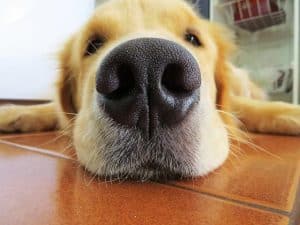When it comes to cats, nail-biting or chewing is just a normal grooming behavior-up to a certain degree of course beyond which it becomes an indication of other underlying issues.
Contents
Normal nail biting
According to Dr. Carlo Siracusa, clinical assistant professor of behavioral medicine at the University of Pennsylvania, “some nail chewing is expected when cats groom- which involves cleaning their paws, chewing on their nails or around their paw pads to get rid of litter, dirt or other debris.”

Typically, cat nails are made of three layers which tend to become worn out and fray over time. And your feline friend tends to bite the nails while grooming to get rid of the outer layer and reveal the sharp nail beneath.
While grooming is very normal for cats, the owner may fail to notice this behavior when it becomes abnormal since the majority of cats prefer comfortable private places to groom.
Behavioral
In some cases, your feline friend may develop behavioral problems that manifest in the form of excessive nail-biting. Nonetheless, there is a very thin line between normal and nail-biting as a compulsive behavior.
Compulsive behaviors are usually self-soothing mechanisms especially when your cat is under stress, bored, anxious or lonely.
However, this behavior can take a variety of forms such as over-grooming, excessive fur pulling, compulsive pacing or wool sucking and pica- commonly seen in the Siamese breed.
Medical
Nail-biting may be caused by an underlying medical condition such as:
- Infections
- Pemphigus
- Ringworm
- Brittle and thick nails in older cats
How to prevent your cat from nail-biting
If you are concerned that your cat's nail-biting habit has become too compulsive or if you notice any form of injury on the toes and nails such as raw skin, bleeding, hair loss, scabs or redness, kindly consult your vet.
The vet will be able to examine your pet and determine the cause of the habit and whether it’s normal or not.
1. A thorough examination and addressing the underlying cause
In order to effectively resolve nail-biting as compulsive behavior, it’s important to address any underlying causes.
Additionally, consider other behaviors that your cat may be exhibiting such as loss of appetite, aggression, overgrooming, hiding, excessive vocalization as well as failure to use the litter tray.
Examine any recent changes is vital in order to establish the cause and determine the best treatment option.
These changes may include:
- a conflict between your cat and other pets.
- Major changes such as the introduction of a new baby, new pet or new people.
- Alterations in your feline's routine.
2. Establish a routine
Cats respond positively to routine, these can include setting a specific feeding or playtime on a daily basis and ensuring that the routine remains constant.
3. Minimize the cat’s stress
Address any underlying cause of stress if possible and ensure the pet has a safe, peaceful place where she can escape to when feeling stressed- possibly away from children or other pets.
Additionally, you can use Feliway diffusers such as Comfort Zone with Feliway Diffuser Refills for Cat Calming, which release feel-good pheromones that make it feel calm.
4. Provide physical and mental stimulation
This is especially important for indoor cats especially if the owner isn’t in the house for long periods of time.
Plan some playtime for it and provide her with a cat tree such as Go Pet Club 62-Inch Cat Tree, shelve perches, toys, boxes or paper bags for use while playing.
5. Medication
In some cases, your cat may be put under antidepressants combined with behavior modification therapy to curb anxiety. The antidepressants medication used include:
- selective serotonin reuptake inhibitors (SSRI)
- tricyclic antidepressants
According to Dr. Siracusa, while nail-biting in your feline friend isn't a cause for concern, but if it's accompanied by any damages, it becomes habitual then its time to take radical measures.
Additionally, knowing your cat is an added advantage since you will be in a position to notice any new behavior immediately it appears and take proper action.
Sources
- https://www.vet.upenn.edu/people/faculty-clinician-search/CARLOSIRACUSA
- https://www.petmd.com/cat/conditions/behavioral/c_ct_compulsive_disorders





Leave a Reply
You must be logged in to post a comment.